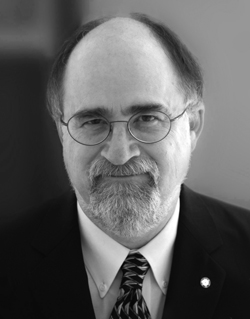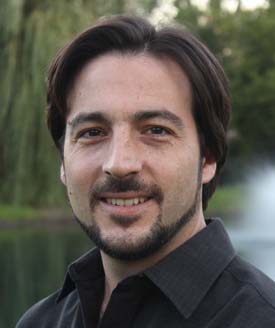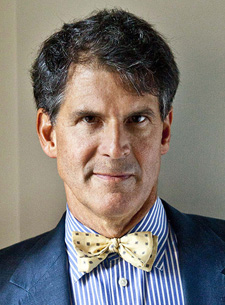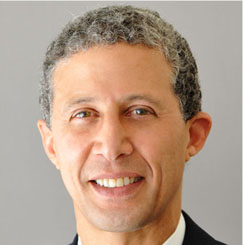Playing Those Mind Games: The Psychedelic Revolution Reconsidered
Printed in the Winter 2015 issue of Quest magazine.
Citation: Kinney, Jay."Playing Those Mind Games: The Psychedelic Revolution Reconsidered" Quest 103.1 (Winter 2015): pg. 20-23.
By Jay Kinney
 The 60s, as an era, have become so mythologized that it is sometimes difficult for those of us who lived through that decade to separate our own genuine memories from the clich's promulgated by advertising, the media, and nostalgia in general. For example, neither I nor anyone I knew who had long hair at the time thought of ourselves as hippies. That was a media term applied by outsiders looking for a snappy label.
The 60s, as an era, have become so mythologized that it is sometimes difficult for those of us who lived through that decade to separate our own genuine memories from the clich's promulgated by advertising, the media, and nostalgia in general. For example, neither I nor anyone I knew who had long hair at the time thought of ourselves as hippies. That was a media term applied by outsiders looking for a snappy label.
"Sex, Drugs, and Rock-n-Roll" is often used to summarize the 60s, but that leaves much out of the picture. The civil rights movement, the antiwar movement, and the widespread interest in Eastern spirituality were all prominent features of the era as well.
However, there is always some truth in every clich', and drugs were certainly something that many of us explored at the time. Not just any drugs, mind you, but specifically psychoactive drugs that promised "expanded consciousness," "God consciousness," "altered states," and "mind-blowing experiences." These mostly boiled down to LSD (familiarly known as acid), mescaline, psilocybin, and in a milder vein, marijuana.
Looking back now from what was then the distant future, it is somewhat difficult to decipher exactly what all the hoopla was about. The most popular rock band in the world, the Beatles, dropped acid, grew their hair long, and very briefly hitched their wagon to the Maharishi's movement for Transcendental Meditation. Harvard professors Timothy Leary and Richard Alpert (later known as Ram Dass) propagandized for acid as an aid to mystical experiences and as a means to deprogram oneself from mainstream culture. Aldous Huxley's Doors of Perception cast its vote for psychedelics as a valid path to expanded consciousness. And in 1968, Tom Wolfe's "new journalism" tour de force The Electric Kool-Aid Acid Test turned Ken Kesey and friends into countercultural heroes with its chronicle of their madcap journey around the country spreading psychedelicized zaniness to the masses.
Among those of us opposed to the boring and oppressive status quo (at least as we saw it), the prospect of swallowing a little pill and being thrust into an encounter with a deeper reality hidden beneath the everyday surface was very intriguing.
There was also a certain "I dare you" dynamic at work. Were we strong enough to have all our run-of the-mill cultural assumptions suddenly pulled from beneath us, to be replaced by fleeting cosmic insights that we hoped to grab, remember, and covertly smuggle back into our everyday lives? This was a challenge that few of us were inclined to ignore. So we plunged right in, inviting cosmic revelations and coping with what were sometimes disappointing results.
I like to think that this was a sincerely held spiritual hunger for an experience of connection with the cosmos at large. At least in my circle of friends, it was not mere thrill-seeking or a casual "what the hell" leap into the unknown. Dropping acid together was a sacramental act (though we didn't call it that), with us hoping for a cleansing of our lenses of perception or at least a sense of renewal and reinvigorated wonder. In opening ourselves to each other, we hoped for an enhanced sense of intimacy. The Beatles sang "All you need is love," and we were testing the premise. Orgies were not had. Instead we were just a bunch of college-age kids trying to cram as much experience into each moment as we could.
Did acid deliver? That's a hard question to answer. First, there was the knotty matter of quality control. Given that acid was illegal, buying LSD from dubious underground sources meant that you never knew whether your dose was pure, adulterated, or totally bogus. Was the acid mixed with speed (amphetamines) or strychnine? Why am I grinding my teeth?
Acid was a subjective jack-in-the-box, with no two trips alike, and no consistency of results. What we were getting from dubious sources was probably as far afield as you could get from the pharmaceutically pure LSD that Leary and Alpert experimented with at Harvard. Were we even ingesting LSD at all? I wouldn't swear to it.
All that said, I had a few acid trips that were truly inspiring, a couple that were depressing, a few that were ho-hum, and some that were fun. Sadly, I did not break through into a new reality, did not achieve Godhead, did not magically reorganize my life into a cosmically aligned juggernaut and, I'm happy to say, did not run head first into a brick wall of repressed psychological fears, angers, or other upsetting emotions. If I did experience some anxiety while tripping, I kept my mind focused on "All you need is love," and that seemed to calm the waves.
Oddly enough, the two- to three-year period of my main psychoactive experimentation coincided with my membership in the Theosophical Society. During my college years, I became intrigued with esoteric teachings, partly because of ingesting Ram Dass's influential spiritual guide Be Here Now, and partly because of reading Theosophical writings about higher planes, chakras, and clairvoyance. Some exponents of psychedelics implied that these drugs could provide a personal experience of such things. The TS for its part discouraged drugs as a spiritual path, but my attitude was "How would they know if they've never done them?"
What I didn't stop to consider was that the two most touted effects of psychedelics"”strikingly beautiful visual hallucinations and insights into a deeper reality"”were at cross purposes. Hallucinations are by definition illusory; enthralling perhaps or artistically inspiring, but certainly no gateway to the Real.
Scholars of mysticism such as Henry Corbin could speak of an "imaginal realm" wherein contemplative meditation"”the creative imaginations of mystics"”could enable you to encounter the spirits of saints, angels, or prophets. But this high-toned conceptual model was no less at the mercy of an ambiguous subjectivity than was an acid hallucination.
The human psyche (and its material analogue, the brain) is capable of an astonishing range of conscious and unconscious manifestations, some of them life-changing, to be sure. But what meaning is ascribed to them involves, more often than not, a leap of faith or a preconceived set of assumptions.
As luck would have it, powerful "visuals," as we called them, largely eluded me, with one notable exception. Usually, at most, I experienced an enhanced (but not distorted) coloring of the world around me and a deepened sense of the life force at work. Trees in particular could assert a living presence, especially as a light breeze rustled their leaves.
The exception to the rule was during one trip when I closed my eyes for an extended period and was bombarded with eidetic images in full color, one after another in close succession. These exhibited a common aesthetic characterized by certain color combinations, a crispness of forms, and an underlying harmony. I likened them to a visual equivalent of Beatles music as produced by George Martin. Afterwards, I had no specific memory of any one image, but the aesthetic charge remained with me and powered much of my art for the next decade or two. This was an unexpected gift from the depths of my unconscious ”and luckily a benign one ”but I was disinclined to attribute it to divine intervention.
One friend of mine was not so lucky. Seized with the impulse for relentless inner exploration, he dropped acid numerous times to the point that the threshold between his imagination and external reality was breached. Intrigued with Alice Bailey's channelings, he became convinced that he was picking up messages from the Masters via shortwave radio. I, along with other friends, tried to persuade him that this was likely not the case, but he would not be dissuaded and eventually was diagnosed as schizophrenic and institutionalized. (I wrote about this in "Some Comments on Theosophy and the Society," The American Theosophist, November 1973, 366-67.)
The lesson I learned from my friend's tragic folly was that one should tread very gently in venturing into the inner realms either through drugs or esoteric teachings, and that a combination of the two could just make matters worse.
However, to dismiss the effects of psychedelics as mere hallucinations is to fail to grapple with the epistemological issues that they raise. To begin with, it is exceedingly difficult to identify a "normal" baseline consciousness that is free of any mind-altering influences. Is someone with, say, clinical depression (but drug-free) really seeing the world more accurately than someone taking Prozac? Or vice versa? Is the alertness engendered by a good cup of coffee not to be trusted? A full Thanksgiving meal can be as mind-altering as a sleeping pill, while extended aerobics can trigger endorphic bliss.
Neuroscience is inclined to view individual human consciousness as a fluctuating field pushed and pulled by influences internal and external. Chanting or meditation involving mantras or repeated prayers can induce a trance state similar to that produced by some drugs, with similar neurological causes for both. Some Catholic saints induced mystical states through self-flagellation, while Emanuel Swedenborg's intercourse with spirits and visions of heaven may have been courtesy of a sustained diet of coffee, bread, and milk.
And these are just instances of waking consciousness. Once we introduce dreams or nightmares or liminal hypnogogic states into the mix, the ambiguity increases exponentially. Few will dispute that a dream can be just as emotionally affecting as a movie, and without the latter's enormous budget. One is seemingly self-generated, while the other is the product of the intricate coordination of hundreds of people. But in either instance, one's consciousness is altered by the experience.
Personally speaking, one of the most meaningful encounters in my life was within a lucid dream, resulting in what the Sufis call a state of fana' or ego-disappearance. (Not to worry, my ego soon reappeared. Just ask my wife.) As is often the case with such things, it was unclear whether this event was "merely" a dream or an astral encounter or something else entirely. Was it purely generated by my own unconscious or the result of "external" stimulation? No drugs were involved, but I'd argue that the meaningful impact would have been similar, even if there had been.
In short, as simple and satisfying as it might be to dismiss psychedelic experiences as delusional and meaningless, one cannot really do so without tossing out other extraordinary non-drug-influenced experiences that similarly challenge our complacent sense of normality.
All that said, there is much to criticize about the psychedelic revolution of the '60s and '70s. Timothy Leary in particular rapidly devolved from a serious psychological researcher into a carnival sideshow barker inviting one and all into his tent of promised wonders. "Tune in, turn on, and drop out" and "You can be anything you want to be, this time around" were catchy mottos aimed at the growing youth culture, urging kids half his age to abandon humdrum career tracks for carefree lives as would-be gypsies and communards. Very little of that panned out well.
The early emphasis on "set and setting" (which boiled down to carefully choosing one's environment for an acid trip and approaching it with an appropriately relaxed and open mindset) got lost somewhere along the way, perhaps because of the influence of Kesey's Merry Pranksters, who threw caution to the wind and reveled in getting hundreds of brave souls tripping together and seeing what transpired. This soon became institutionalized as standard operating procedure for rock concerts across the continent, perhaps most famously symbolized by the hundreds of thousands of stoned and tripping youths at Woodstock's festival of rain and mud. Taking a page from Tim Leary's playbook, erstwhile yippies Abbie Hoffman and Jerry Rubin tried to conjure up "Woodstock Nation" as a mighty countercultural force, but the '60s were on their way out and the "Me Decade" soon arrived.
Leary's vision of kids reprogramming themselves with LSD likely did not include the Manson Family's approach, which culminated in their creepy crawling around Beverly Hills propagating murder and mayhem. None of this was necessarily inherent in the use of psychedelics, but it was perhaps inherent in portraying the drugs as a one-size-fits-all mind-expanding panacea. Clearly, some minds were not meant for expanding.
For my part, after perhaps two dozen trips over the course of three years, I largely drew my psychedelic explorations to a close. I was now living in unforgiving urban settings (notably New York) and it didn't take too many ill-conceived outings to decide that tripping while riding the subway back and forth to shows at the Fillmore East was not a successful strategy for a pleasant evening.
Moreover, as someone whose main motivation for dropping acid was to see what I could "learn" from the experience, it began to dawn on me that I seemed to be learning the same lesson over and over.
As I was coming down and feeling sweaty and exhausted, I'd take a nice hot shower and resolve to work on myself and become a better me. If this was an entirely appropriate plan of action for a twenty-one-year old, it was not a message that required dropping acid repeatedly to get. I figured I'd quit while I was ahead, before I began to be strangely attracted to scanning shortwave radio for messages from the Masters.
My interest in mysticism and esoteric teachings persisted, but their pursuit seemed better served by steady incremental study rather than by sudden plunges into psychological thickets. Epistemological ambiguity remained a constant companion"”what did I really know from my own experiences, not just from someone else's say-so?
In due course I realized that I truly "knew" very little that wasn't open to multiple explanations. I came to see belief systems as frameworks to explore, not as all-or-nothing choices. There might be virtues in every system, but there were distortions and drawbacks as well. Which is not to say that I floated above it all, looking down from some ostensibly objective vantage point. Far from it. I practiced the ability to provisionally suspend disbelief while working with a particular system. Seeing the world through its eyes, I aimed for a sincerity of practice free of dogmatic certainty. While it would be tidy to attribute this capacity to my psychedelic days, it probably had as much to do with my reading William James's Varieties of Religious Experience or with my intuitive agreement with the Theosophical tenet "There is no religion higher than truth."
Meanwhile, others' psychoactive explorations continued. In many cases, the old standby drugs such as acid were superseded by newer chemical concoctions hovering at the edge of legality. As chronicled in his Center of the Cyclone, John Lilly thoroughly immersed himself in ketamine use, which either brought him into contact with an alien civilization or triggered a delusional psychosis"”exactly which was not clear from a safe distance. Terence and Dennis McKenna found that taking ayahuasca in the Amazon jungle similarly brought UFOs into the picture. Other researchers bounced from MDMA to MDA to DMT to toad venom. These reportedly brought encounters with Self-Transforming Elf Machines (or STEMs) that were integrated in some fashion into the understructure of the universe. These were certainly intriguing developments, but were they really helpful? I could understand the fascination. They seemed to be interactions with a radical Other that was somehow both external and internal. But I already had my hands full with my ongoing epistemological ambiguities and I saw no need to introduce elves or aliens into the puzzle. According to some Sufis, jinns and other beings of the Unseen lived among us in a parallel dimension or plane, but they were notorious tricksters and you trafficked with them at considerable risk. Thanks, but no thanks.
Ever since humans first unknowingly ate a magic mushroom or ergot-moldy bread or any number of naturally occurring psychoactive substances, people have known that a shift in consciousness is just a bite away.
For the adventurous among us, this has been an opportunity to push the envelope of consciousness: What lies beyond my usual mental ruts and assumptions? Who or what might I encounter as I fly through inner space? Who exactly are you and I? Are we both part of the same cosmic One or are we separate entities seeking an elusive union?
For the more cautious among us who are just trying to get by and who understandably don't wish to overturn our mental applecarts at the drop of a hat, we'rem satisfied to stick to fewer questions, skip the psychedelics, and just deal with the car's muffler coming loose.
I feel the tug of both tendencies and don't praise one over the other. As tempting as it may be to set a hard-and-fast rule and say yea or nay, there are just too many variables to each individual, drug, and situation to allow for a final judgment.
Imre Vallyon, a spiritual teacher and author of Heaven and Hells of the Mind, has opined that psychedelics puncture the etheric body, allowing the astral world to flood in. (See his comment in the "Drugs and the Path" symposium, Gnosis magazine 26 [Winter 1993], 22.) Maybe so, but I still consider the jury out as to whether there is such a thing as the etheric body or the astral world in the first place. I've had experiences that could conceivably affirm the existence of both, but epistemological ambiguity suggests that an equally valid explanation for certain effects could be that psychedelics simply stir up one's unconscious, with unpredictable results.
I don't regret having taken psychedelics when I was younger, but I also have zero desire to try them again at this late date. Whether this is an indication of a hardwon wisdom or of a lack of curiosity and daring, it is hard to say. Probably both. I think I'll just cut to the chase and go take a nice hot shower and resolve to be a better me.
A 1993 issue of Gnosis was devoted to the theme "Psychedelics and the Path." For more information, visit lumen.org.
JAY KINNEY was founder and publisher of Gnosis magazine, published from 1985 to 1999. He is also the author of The Masonic Myth (Harper Collins), which has been translated into five languages. His article "Shhh! It's a Secret: Grappling with the Puzzle of Freemasonrywith the Puzzle of Freemasonry" appeared in Quest, Summer 2013.


 Ours is a time when pleasure and amusement seem to be the new god. In fact, according to Michael J. Wolf in his 2003 book The Entertainment Economy, entertainment has become the driving wheel of the global economy. The cause for this is not new. Nineteenth-century philosopher Arthur Schopenhauer argued that there must be something wrong with our very existence, because we are not happy with simply being. We are in a condition of eternal frustration, continually striving to find satisfaction. This search has led humanity to try different avenues: religion, knowledge, power, wealth, fame, pleasure—and drugs.
Ours is a time when pleasure and amusement seem to be the new god. In fact, according to Michael J. Wolf in his 2003 book The Entertainment Economy, entertainment has become the driving wheel of the global economy. The cause for this is not new. Nineteenth-century philosopher Arthur Schopenhauer argued that there must be something wrong with our very existence, because we are not happy with simply being. We are in a condition of eternal frustration, continually striving to find satisfaction. This search has led humanity to try different avenues: religion, knowledge, power, wealth, fame, pleasure—and drugs.  The first time I learned about altered states of consciousness (ASCs) from official medicine was in my last year of medical school. We had just started our cycle of lectures on psychiatry and psychotherapy. Professor X seemed to be boring, and as the lecture didn't promise much, I was about to start reading my favorite book on yoga. But surprisingly, he opened with a story about a patient who had come to his practice after being treated by an Altai shaman with long-distance hypnosis, a method that enables a practitioner to hypnotize a patient without being physically present. Needless to say, he captured the attention of the audience. He went on to discuss street hypnosis (often used by gypsies), trance and trancelike states, meditation, and even clairvoyance. This was the first time anyone in our university had spoken about such unusual and controversial subjects. By that time I had already studied yoga long enough to know about the five states of mind described by the sage Vyasa in his commentary on the Yoga Sutras, as well as the states of consciousness described as svapna, jagrat, sushupti, and turiya, which correspond to the states of waking, dreaming, dreamless sleep, and pure consciousness respectively. But the thought of actually researching and scientifically explaining this ancient knowledge was a turning point for me, and it led me to choose psychiatry as my specialty.
The first time I learned about altered states of consciousness (ASCs) from official medicine was in my last year of medical school. We had just started our cycle of lectures on psychiatry and psychotherapy. Professor X seemed to be boring, and as the lecture didn't promise much, I was about to start reading my favorite book on yoga. But surprisingly, he opened with a story about a patient who had come to his practice after being treated by an Altai shaman with long-distance hypnosis, a method that enables a practitioner to hypnotize a patient without being physically present. Needless to say, he captured the attention of the audience. He went on to discuss street hypnosis (often used by gypsies), trance and trancelike states, meditation, and even clairvoyance. This was the first time anyone in our university had spoken about such unusual and controversial subjects. By that time I had already studied yoga long enough to know about the five states of mind described by the sage Vyasa in his commentary on the Yoga Sutras, as well as the states of consciousness described as svapna, jagrat, sushupti, and turiya, which correspond to the states of waking, dreaming, dreamless sleep, and pure consciousness respectively. But the thought of actually researching and scientifically explaining this ancient knowledge was a turning point for me, and it led me to choose psychiatry as my specialty. Eben Alexander: I've spent more than twenty years in academic neurosurgery and thought I had some idea of how brain-mind consciousness worked. I fully logged into the reductive materialistic mindset of neuroscience of the twentieth century, which that says there is something about the neurons of the brain and their firing that gives you consciousness. Even though nobody had a clue of how that worked, I thought we just needed to study it more and figure it out.
Eben Alexander: I've spent more than twenty years in academic neurosurgery and thought I had some idea of how brain-mind consciousness worked. I fully logged into the reductive materialistic mindset of neuroscience of the twentieth century, which that says there is something about the neurons of the brain and their firing that gives you consciousness. Even though nobody had a clue of how that worked, I thought we just needed to study it more and figure it out. When I was twenty years old I unexpectedly found myself in contact with a number of psychically sensitive people. I had not sought them out. Before making their acquaintance I had not known anything about them or what they did. I was in college at the time and had never given much thought to the whole subject of psychic perception.
When I was twenty years old I unexpectedly found myself in contact with a number of psychically sensitive people. I had not sought them out. Before making their acquaintance I had not known anything about them or what they did. I was in college at the time and had never given much thought to the whole subject of psychic perception.